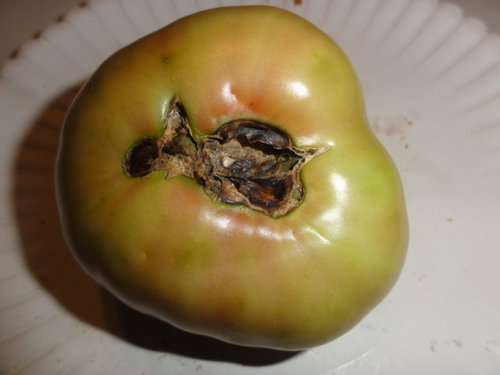what's wrong ?
sorie6 zone 6b
9 years ago
Related Stories

LIFEYou Said It: ‘Every Room Should Have the Right Wrong Thing’ and More
This week on Houzz we were inspired to break out of catalog styling ruts and let our design freak flags fly
Full Story
REMODELING GUIDESWhy Marble Might Be Wrong for Your Bathroom
You love its beauty and instant high-quality appeal, but bathroom marble has its drawbacks. Here's what to know before you buy
Full Story
LIFEYou Said It: ‘The Wrong Sink Can Make You Hate Your Kitchen’
Design advice, inspiration and observations that struck a chord this week
Full Story
FURNITUREWhy You Really Can’t Go Wrong With Cotton
Cotton may not be as glamorous as velvet or linen, but it just might be the perfect fabric for upholstered furniture
Full Story
GARDENING GUIDESWhat's Wrong With My Plant? Leaves Often Hold the Clues
Learn how to identify common plant ailments by reading their leaves
Full Story
COLOR8 Color Palettes You Can't Get Wrong
Can't decide on a color scheme? Choose one of these foolproof palettes for a room that feels both timeless and fresh
Full Story
HOUSEKEEPING7 Chores You May Be Doing Wrong
Find out the best way to clean glass and change a duvet cover — and why you should remember to look up
Full Story
WINDOW TREATMENTSThe Key to Designer-Look Window Treatments
Learn the one thing that will make your curtains suffer if you get it wrong — and how to get it right
Full Story
FURNITURE10 Traditional Pieces That Look Great in Modern and Contemporary Spaces
You can’t go wrong with these classic furnishings, no matter the style of your home
Full Story
KITCHEN DESIGN8 Stylish Sink Types for Kitchens of All Kinds
Choose the wrong sink and your kitchen renovation efforts may go down the drain — these sinks will let you clean up in the style department
Full Story






Okiedawn OK Zone 7
Lynn Dollar
Related Professionals
Maple Valley Landscape Architects & Landscape Designers · Forest Acres Landscape Architects & Landscape Designers · Maple Heights Landscape Architects & Landscape Designers · Stoughton Landscape Contractors · Burien Landscape Contractors · El Segundo Landscape Contractors · Hoffman Estates Landscape Contractors · Lynchburg Landscape Contractors · Panama City Beach Landscape Contractors · Ankeny Decks, Patios & Outdoor Enclosures · Crystal Lake Decks, Patios & Outdoor Enclosures · Fort Collins Decks, Patios & Outdoor Enclosures · Kansas City Decks, Patios & Outdoor Enclosures · Montgomery County Decks, Patios & Outdoor Enclosures · Salem Decks, Patios & Outdoor EnclosuresOkiedawn OK Zone 7
helenh
sorie6 zone 6bOriginal Author
Okiedawn OK Zone 7